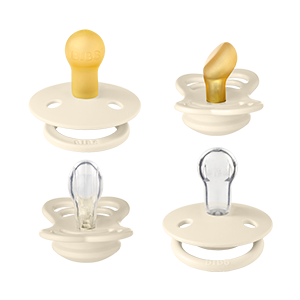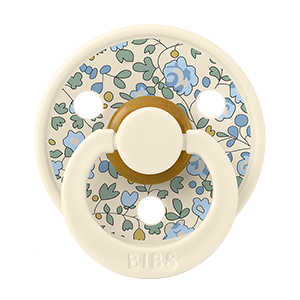
A Guide to Choosing the Best Baby Bottle
You can feed your baby breastmilk or infant formula from a bottle. No matter the content or the reason for choosing bottle feeding there are some aspects you need to consider when choosing the right bottle for your baby. We have listed the features we recommend you look for when choosing a baby bottle:
1. Choose a bottle with an anti-colic function
Bottles with an anti-colic function feature a valve or other ventilation system that ensures a smooth milk flow and reduces air swallowed while feeding.
Colic is when a baby cries a lot, with no obvious cause. All newborns cry sometimes, but if your baby cries for more than 3 hours a day, 3 days a week for at least 1 week, then they may have colic. It is very common and affects about 1 in 5 babies. Doctors do not know what causes colic. Some suggest it is due to digestion problems or a sensitivity to something in the baby's formula or the breastmilk. A tip for trying to reduce colic is to help your baby swallow less air while feeding. When bottle-feeding it could be choosing a bottle with an anti-colic function.
2. Choose a bottle with a round nipple
If you want to combine breastfeeding and bottle-feeding a round bottle nipple is preferred. Go for a round nipple that is designed to mimic the mother’s soft nipple in shape and size. This is to prevent “nipple”-confusion if you are both breastfeeding and supplementing with a bottle.
3. Choose a bottle that offers nipples with different flow rates
The flow rate refers to the size of the hole(s) in the nipple, affecting how quickly milk flows into your baby’s mouth. For newborn babies, a slow flow rate is recommended for slowing down bottle-feeding to better mimic breastfeeding, to better control milk intake, and secure babies do not overeat. Normally, will the flow rate change over time as the baby grows, and the older the baby gets he or she will prefer a faster flow rate.
4. Choose a bottle in glass
A study published in Nature Food* found that plastic baby bottles can expose infants to thousands (even millions) of particles of microplastics per day. In contrast, glass resists chemicals and acid degradation, so you don’t need to worry about harmful chemicals or microplastics leaking into the milk.
Go for a bottle made in borosilicate glass. This type of glass is temperature- and thermal shock-resistant, durable, and much more. Bottles in borosilicate glass withstand freezing, thawing in boiling water, microwave heating, and dishwasher cleaning.

Shop our BIBS Baby Bottle here >>
* Microplastic release from the degradation of polypropylene feeding bottles during infant formula preparation (2020) (https://www.nature.com/articles/s43016-020-00171-y)
General blog information
The content on the BIBS Blog is designed to provide general information and education. While we aim to support the use of our baby products, including pacifiers, bottles, and cloths, this content does not replace professional medical advice or imply endorsements unless clearly stated. We make every effort to ensure the information shared is accurate and reliable; however, we cannot guarantee it will meet all your needs. Please use the information provided at your own discretion. BIBS is not responsible for any outcomes related to the use or misuse of our products or any other outcomes resulting from the information found on our blog.















